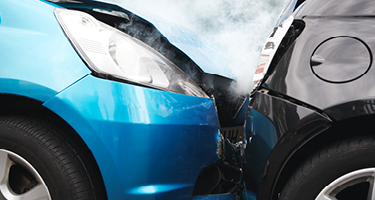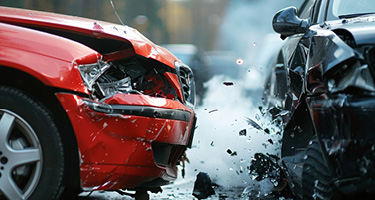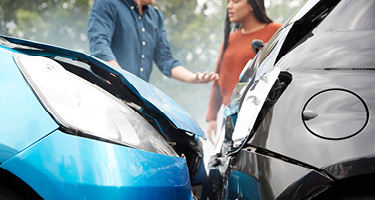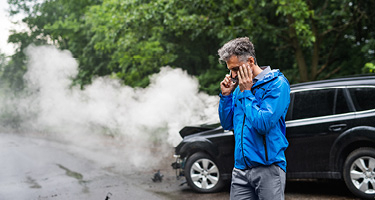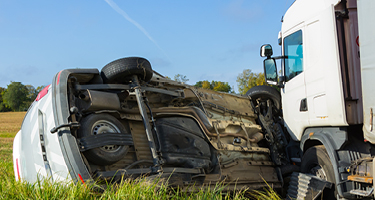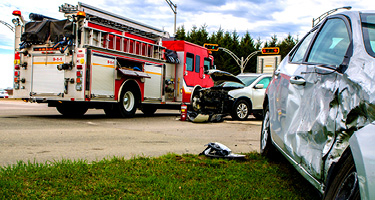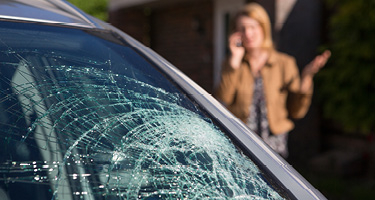Accidents and collisions are terms that are often used interchangeably, but there are some key differences between the two. Understanding when to use each term can be important, especially in legal and insurance contexts. Let’s answer the question, what is the main difference between an accident and a collision?
Defining Accidents
An accident is an unplanned, unintentional event that causes damage or injury. Accidents are unpredictable and occur without any intent or negligence. For example, a tree branch falling on a parked car during a storm in California would be considered an accident - there was no intent or negligence, just bad luck. Your car will probably be written off and you might get hurt, but there’s nobody you can blame most of the time.
Some key features of accidents:
- Unplanned and unintentional
- No negligence or recklessness involved
- Result of chance, fate or circumstances beyond control
- Can still cause damage and injury
- Not preventable
Accidents are outside of anyone's control and cannot be avoided. However, the damage caused by an accident may be covered by insurance policies.
Defining Collisions
A collision refers to two objects striking each other with force. Collisions often involve motor vehicles, but the term can apply to any objects that crash into one another.
Collisions can be accidental or non-accidental. The key difference is that collisions can sometimes result from negligence, recklessness, or intent. For example, two cars hitting each other at an intersection because one driver ran a red light would be considered a collision, not an accident.
Key features of collisions:
- Involve two or more objects striking each other
- Can be intentional or unintentional
- May result from negligence, recklessness, or intent
- Damage and injuries may be foreseeable and preventable
- Legal and insurance implications differ from accidents
Collisions in California are not entirely random - they often have a cause that could potentially have been avoided. Determining fault and liability is important after collisions.
Accident vs. Collision in Legal Context
The terminology used to describe California car crashes and other incidents matters greatly in legal and insurance claims, which is something your auto accident attorney Oakland CA from Karns & Karns Personal Injury and Accident Attorneys can explain more about. Calling an event an accident versus a collision can impact who is determined to be at fault and how damages and injuries are covered.
Insurance companies and police reports will make a distinction between a true unavoidable accident and a preventable collision caused by violations, reckless behavior, or negligence. A Karns & Karns Personal Injury and Accident Attorneys vehicle accident lawyer will also pay close attention to the words used when building a case after an incident.
Even if harm was unintended, if it results from reckless or negligent actions, it is less likely to be considered a pure accident and more likely to be deemed a preventable collision. There can be legal consequences and financial liability for those responsible for collisions.
Examples of Accidents vs. Collisions
It can help to look at some examples to see the distinction between accidents and collisions in practice:
Accident examples include:
- A driver suddenly experiences a medical emergency like a seizure or heart attack that causes them to lose control of their vehicle. There was no negligence involved, just an unfortunate medical event.
- A tree falls on a car during a severe thunderstorm, causing damage. The storm was unpredictable and the driver did nothing wrong.
- A distracted pedestrian walks into traffic and is struck by a car. The driver was attentive and could not have stopped in time. The pedestrian's inattention caused the collision with the car.
Collision Examples:
- A driver runs a red light and t-bones another vehicle in the intersection, injuring its occupants. The red light runner was negligent and violated traffic laws, causing the collision.
- Two cars collide when one drifts out of their lane and sideswipes the other. The lane drifter was reckless and at fault for the collision due to improperly staying in their lane.
- A drunk driver crashes into a guardrail. The collision was caused by the impairment and poor judgment of the driver. Their actions directly resulted in the crash.
Determining Fault in Collisions
When a collision occurs, police, motor vehicle accident lawyers, and insurance investigators will conduct an in-depth analysis to determine which party or parties were at fault. Some key factors they examine include:
- Traffic signs, signals, and laws - Who violated the rules of the road? Running lights, speeding and illegal turns can cause collisions.
- Impairment - Was alcohol, drugs, lack of sleep, or distraction involved? These impair judgment and driving ability.
- Unsafe actions - Did a driver make an unsafe lane change, tailgate, or drift out of a lane? Was a pedestrian inattentive and jaywalking? Reckless actions often precipitate collisions.
- Vehicle defects - Could faulty equipment like bad brakes have contributed? Mechanical problems can lead to loss of control.
- Environmental factors - Slippery roads, poor visibility, and bad weather can influence collisions even if the drivers themselves were not negligent.
- By thoroughly investigating these factors, the preventability of the collision can be assessed by an auto accident lawyer Oakland CA, and liability determined in most cases.
In situations like these, many people choose a lawyer for guidance through the next steps.
When to Use Each Term
To summarize the key differences:
- Accident is appropriate when no negligence, intent, or recklessness was involved. An accident cannot be blamed on anyone and occurs by chance.
- Collision should be used when negligence or violations contribute to an incident. Collisions are preventable to some degree and fault can be assigned.
In general, collision is the best term for car crashes and similar incidents. Unless it was a pure act of nature with no possible blame, most traffic incidents result from someone's actions.
However, accident may apply in certain scenarios, such as an unexpected medical issue causing a driver to lose control. The key is assessing if intent, negligence or recklessness played a part or not.
Distinguishing between accidents and collisions requires analyzing if an incident was truly unavoidable and unpredictable or if human choices and actions contributed to the outcome. There are legal and insurance implications in the terminology used. Overall, collisions indicate some degree of fault and liability, while accidents do not assign blame. Being specific in language helps determine responsibility after incidents occur.
Speak with Karns & Karns Personal Injury and Accident Attorneys if you want advice today.


